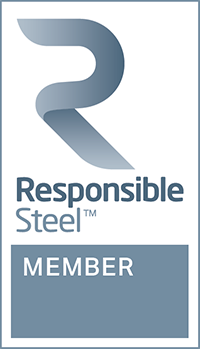Attention Homebuyers! Steel is
the new 'green' trend
With the green building industry growing expeditiously, low-impact construction materials have become quite a trend. Homebuyers are now looking forward to investing in green technologies and materials owing to their cost-effectiveness and environment-friendly properties.
The considerable amount of natural resources required by home construction warrants responsible and judicious use. The concept of green buildings in line with the idea of sustainability ensures preservation and protection of the environment and all its stakeholders at large.
What is a green building?
A building that reduces the negative impact on environment through effective management of natural resources is referred to as 'green building'. From leveraging sustainable construction materials to following stringent waste reduction measures, a green building does not compromise with anything that may impact the environment negatively.

Why is 'steel' the new 'green'?
When steel was first used in construction, it was chiefly identified as the material of strength and durability. However, as time passed, steel has emerged as one of the preferred building materials owing to its tremendous potentialities.

In 1933, during the World's Fair in Chicago, houses made from cold-formed steel stole the limelight by appearing in “home of the future” exhibit and its legacy continues till today.
As per the Steel Recycling Institute, it would just take recycled steel from approximately six cars to frame a 2000 sq. ft double-storey house. If the same area of the frame is constructed with wood, it would require about an acre of trees. This clearly shows the pertinence of steel as a green building material.
Steel, with its potentially unlimited lifecycle, finds critical application in home construction, thanks to its properties of strength, durability, and flexibility. Moreover, its design capabilities give it an edge over its counterparts. Used in flooring, exteriors and everything in between, steel's multifaceted qualities make it a standalone material for home construction and related activities that take sustainability into consideration.
Homebuyers committed towards a holistic vision of life and living are preferring steel as the primary construction material in their choice of residential projects. Whether it is about reducing the carbon footprint or bringing down the cost of construction, the versatility of steel is unparalleled. Furthermore, the moisture and weather-resistance properties of steel lend steel its ability to prevent mould growth and decay.
A steel-framed house enhances protection against both fire and lightning, making it a safe refuge for its dwellers in the truest sense.
What are the types of steel used in construction?
Plain Carbon Steel or Mild Steel
Strong and durable, mild steel is extensively used in the residential construction projects to ensure a robust structure. These structures are also able to withstand various natural calamities such as earthquakes and floods.
Rebar Steel
Rebar steel is used to reinforce internal steel structures. With specifications like high yield strength and tensile strength, it encourages durability and water and weather resistance.
Structural Steel
Structural steel comes with predetermined chemical composition as well as mechanical properties that make it perfect for home construction. The various shapes of structural steel include I-Beam, HSS shape, structural channel (C-beam, cross-section), rail profile, bar, etc.
Steel encourages sustainability by delivering excellent performance as per the green building standards. The need of the hour is to take individual ownership to prevent environmental degradation and opting for a 'green' building is the right way forward in that direction.
Information sources:Steel Technology, ResearchGate, World Green Building Council







